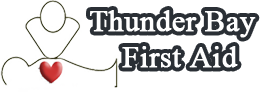The Transportation of Dangerous Goods (TDG) Regulations
The Transportation of Dangerous Goods (TDG) Regulations were published in the Canada Gazette in 2001 and were enforced all over the country by 2002. The regulations aim to promote public and occupation safety by regulating the handling and transport of dangerous goods in Canada. Provincially, the Dangerous Goods and Rail Safety Branch is responsible for enforcing the regulations, which also involve TDG training.
Receiving TDG Training at Thunder Bay First Aid
Thunder Bay First Aid offers monthly training programs for the Transportation of Dangerous Goods, as a classroom program and an online program. Both kinds are made up of nine modules but have different program lengths. If you complete training with at least 80 percent on the final test, you will be awarded with a TDG training credential, which will certify that you have received TDG training.
- Classroom program (TDG) – four hours, 49.99 dollars
- Online program (TDG) – three hours, 29.99
Note: TDG training certificates we award students have no expiry. Students are not required to retake training every few years but it is encouraged to do so.
Classroom or Online Training?
While choosing a program is dependent on your needs, both TDG programs have the same high quality curriculum with the same number of units or modules. We advise trainees who are still in school or work during the day and afternoon to take online classes, which is much more convenient than taking a day off from class or your job, since online classes can be taken at any time of the day (that’s right, even at night!).
If you don’t have any responsibilities from 8am to 5pm, then the classroom TDG course is perfect for you. It runs a bit longer, at four hours, but involves hands-on training.
Learning About Safety Marks
Safety marks are labels found on dangerous goods containment units. According to the TDG Regulations, safety mark needs to have specific information found on it to be approved by the regulating bodies.
Shipping document information includes (1) date, (2) name and address of supplier, (3) goods description [shipping name, technical name of the most dangerous component, words “not odorized”, classification, compatibility group, subsidiary classifications, UN number, packing group), (4) quantity [SI units], (5) number of containers, (6) 24 contact details of the supplier.
Since container sizes vary, the TDG regulations have specified different requirement for small means of containment (less than 450 liters) and large means of containment (450 liters or more). On a small container, the label can be reduced to up to 30mm on each side which should contain the following (1) UN number and (2) shipping name, affixed as a tag to the container.
Large means of containment are labels with placards, with each side at least 250mm in length.
Thunder Bay First Aid office hours are form 8 in the morning to 5PM. Students are encouraged to enroll in person if they are available so their slots are immediately confirmed. Otherwise, online enrollment is also available. Students can use this method at any time of the day; we will confirm their slot during the next business day.
